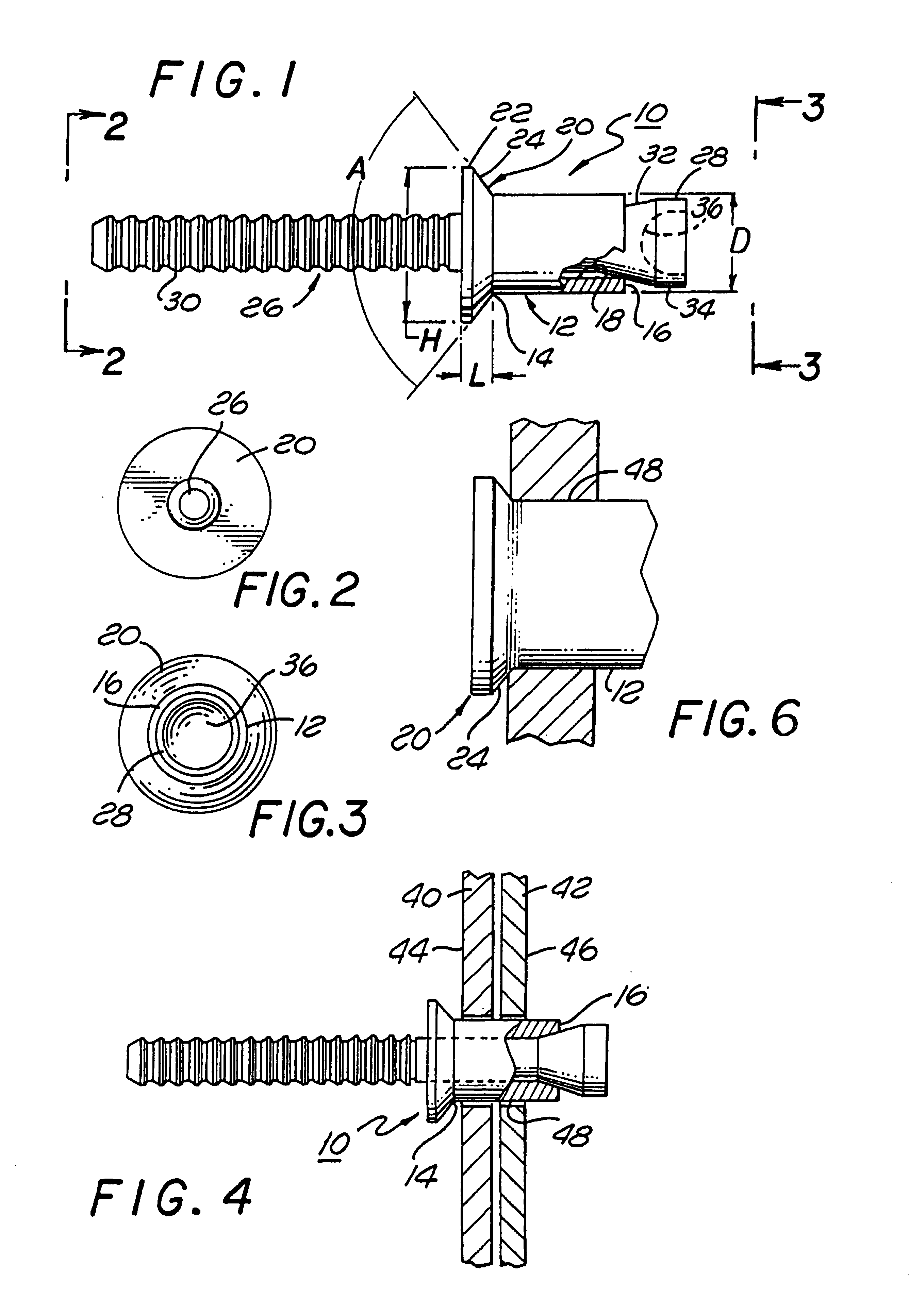Method for replacing a tacking fastener
a technology of tacking fasteners and fasteners, which is applied in the field of metal working, can solve the problems of splinters, parts of the head that can scratch the surface of the outer workpiece, and the area of the aircraft is not fully accessible, so as to reduce the volume of fastener materials and reduce the size and amount of chips produced
- Summary
- Abstract
- Description
- Claims
- Application Information
AI Technical Summary
Benefits of technology
Problems solved by technology
Method used
Image
Examples
Embodiment Construction
[0020]Referring to the drawings more particularly by reference numbers, FIGS. 1 through 3 show a tacking fastener 10 of the present invention. The tacking fastener 10 is typically used to temporarily fasten together two adjacent workpieces. The fastener 10 includes a shank 12 which has a first end 14, a second end 16 and an inner channel 18 that extends through the shank 12. Extending from the first end 14 of the shank 12 is a conical shaped head 20. The head 20 has an annular lip portion 22 that is separated from the first end 14 by a tapered portion 24.
[0021]The fastener 10 includes a pull stem 26 that extends through the inner channel 18 of the shank 12. The pull stem 26 has a stem head 28 that is located adjacent to the second end 16 of the shank 12. The stem 26 also has a serrated pull portion 30 that can be gripped by a pull gun (not shown) to pull the head 28 through the inner channel 18 of the shank 12. The stem head 28 may have a tapered portion 32 which leads the head 28 i...
PUM
| Property | Measurement | Unit |
|---|---|---|
| diameter | aaaaa | aaaaa |
| diameter | aaaaa | aaaaa |
| diameter | aaaaa | aaaaa |
Abstract
Description
Claims
Application Information
 Login to View More
Login to View More - Generate Ideas
- Intellectual Property
- Life Sciences
- Materials
- Tech Scout
- Unparalleled Data Quality
- Higher Quality Content
- 60% Fewer Hallucinations
Browse by: Latest US Patents, China's latest patents, Technical Efficacy Thesaurus, Application Domain, Technology Topic, Popular Technical Reports.
© 2025 PatSnap. All rights reserved.Legal|Privacy policy|Modern Slavery Act Transparency Statement|Sitemap|About US| Contact US: help@patsnap.com



